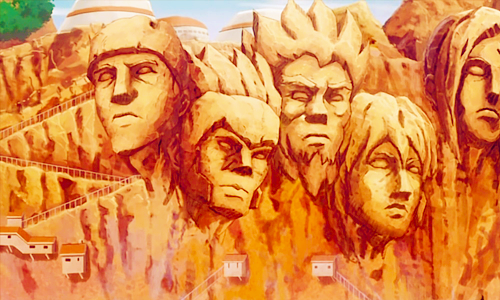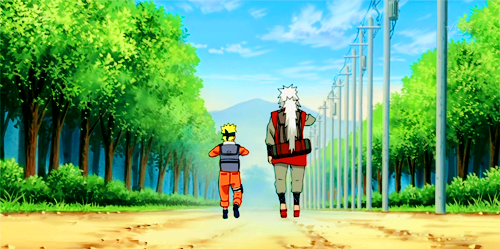 Ayato HyuugaHogokage
Ayato HyuugaHogokage
- Stat Page : ㊆
Mission Record : ㊆
Summoning Contract : Forest of Dreams Ravens
Living Clones : Natsuki
Toneri
Familiar : Maneki
Legendary Equipment : Raiment of Eternal Fortune
Stone of Gelel











Clan Focus : Taijutsu
Village : Hoshigakure
Ryo : 435700
 The World of NRPG
The World of NRPG
Thu May 26, 2022 12:44 pm

The World of Naruto RPG
NRPG is an alternate universe roleplay forum inspired by the Naruto series, providing a platform for members to craft unique characters and delve into a world that diverges from the original Naruto storyline. While rooted in the Naruto series, the forum introduces fresh elements, storylines, and character interactions, creating a narrative separate from the canon material.
The setting is described as a feudal society where secretive warriors, known as shinobi or ninjas, play a central role. These shinobi harness a mystical power called Chakra, enabling them to execute extraordinary feats like breathing fire, moving at incredible speeds, and casting illusions. They employ these skills to undertake various hired missions, enhance their abilities, and establish reclusive city-states called Villages.
Despite the predominantly feudal governments, the society and technologies in this world are eclectic and diverse. Venturing west leads to encounters with villages sporting a Meiji Era theme, reflecting Western influences. Meanwhile, the eastern continent introduces characters adorned in attire reminiscent of the Muromachi Period, complete with straw hats.
In this world, gunpowder explosions and zooming motorized contraptions are conspicuously absent. The land remains untouched by modern vibes, emphasizing swords and scrolls over guns and engines.
Table of Contents


Villages within NRPG are distinct sanctuaries where Shinobi unite, providing safety, structure, and an environment conducive to growth. These vibrant communities are divided into three tiers based on technological advancements: Settlements, representing simplicity; Minor Villages, embodying moderate progress; and Major Villages, showcasing advanced innovation. To delve into the specifics of each village type and embark on the journey of forming your own, the Village Creation Guide serves as a comprehensive resource, offering detailed insights and guidelines.
The Major Villages of NRPG can be found below.
Konohagakure no Sato | Land of Fire
Motto: "Rooted in Unity, Forged in Loyalty."
Hokage: Aokidanza Senju
Deputy Kage: Goto Senju
Village Status: Open to new members
Description: Nestled amidst the Fire realm's embrace, Konohagakure no Sato, once a vibrant hub, has journeyed through prosperity and trials. It weathered the storms of conquest and economic decline, leaving scars that shaped its destiny. Leadership transitions cast shadows upon its shinobi spirit, eroding faith among those who sought guidance. Yet, from these challenges arose a steadfast era, birthing a Root Konoha, a sentinel of loyalty rooted deep within its soil.
Hoshigakure no Sato | Land of Haven
Motto: "We Light the Way."
Hogokage: Ayato Hyuuga
Village Status: Open to new members
Description: Perched in the northwest's untamed embrace lies Hoshigakure no Sato, akin to the lonely vales from old tales. A realm where nature and serenity intertwine, shrouded by mountains and cloaked in forests. This sanctuary, born from a marriage of wilderness and the shinobi way, mirrors Haven's isolation.
As the mountains stand, Hoshigakure stands proud—a haven where strength melds with the tranquility of its surroundings. Clans rise like peaks, and within the haven's heart, the elite Nova Corps, draped in white cloaks, protect harmony. A reflection of Vale's unity, Hoshigakure thrives, a sanctuary amidst the tumultuous world.
Kumogakure no Sato | Land of Lightning
Motto: "Thunderous Might, Lightning's Resilience."
Raikage: Ichigo Sato
Village Status: Open to new members
Description: Amidst the peaks of the Lightning realm, Kumogakure no Sato stands resilient, a synthesis of raw might and the spirit of the mountains. A history woven with change, its narrative is marked by the ebb and flow of power. Ichigo Sato, a blacksmith's son, now carries the mantle of leadership with an ironclad grip. His vision echoes like a lightning bolt, illuminating a path for the village as it shapes its destiny through thunderous resolve.
Neo Kirigakure no Sato | Land of Water
Motto: "Beneath the Mist, The Bloody Blade."
Mizukage: Akabayashi Terumi
Village Status: Open to new members
Description: Beneath the enigmatic mist, Neo Kirigakure no Sato stands as a testament to resilience, entwined with the echoes of its turbulent history. A realm steeped in brutality and authoritarianism, it carries the legacy of Xyxer Gyojin, a founder lost to time's grasp. The village's journey is marked by the pursuit of strength amidst uncertainty as it yearns to reclaim its identity and stand tall within the embrace of the mist.
Hyōgagakure No Sato | Land of Snow
Motto: "Frozen Determination, Forged in Ice."
Hyōgakage: Sakaiza
Village Status: Open to New Members
Description: In the icy embrace of the Snow realm, Hyōgagakure No Sato stands as a militarized bastion, a beacon of order amidst the chaos of the Shinobi World. Its economic prowess and formidable military force shape its identity. Within its borders, financial acumen and power intertwine, creating a realm that serves as both sanctuary and a sword for hire, its legacy etched in pursuit of calculated stability.
Minor Village:
Tsukigakure No Sato | Land of Moon
Motto: Lunar Grace, Lethal Resolve
Village Leader: Junko Tsukiko
Village Status: Open to new members!
Description: Tsukigakure, the village nestled in the center of Moon Country, is an island paradise where the beauty of nature meets the strength of those within its walls. Immersed in the serene beauty of dense forests, lush greenery, and crystal clear waters from various rivers, streams, and beaches, the village invokes a sense of harmony. The calm, tranquil environment provides a sense of safety to those who visit its shores and creates a deep bond among its inhabitants. Tsukigakure stands as a beacon of resilience, where peace and power coexist under the gentle glow of the crescent moon.
Missing Ninja and Vagabond
The ninjas not aligned with any specific village are known as Vagabonds or Missing-Nin. Scattered across the diverse landscapes, these individuals may seek to integrate into villages and adhere to their rules. Yet, some clans face ostracism, forcing their members to begin their journey in these unaffiliated factions. Despite the transient nature of their existence, Vagabonds and Missing-Nin have found a small sanctuary—the most notable being nestled in the heart of the Land of Hotsprings. Here, amidst the bubbling waters and mysterious landscapes, their stories unfold.
At Bounty Station Central, vagabonds can earn rewards for delivering ninja bodies, whether in life or death. Meanwhile, the Black Markets are a covert hub for missing ninja activities. In their respective location, they can create topics with private and no-kill tags.

The Kage, holding the paramount rank in the ninja world, assumes a role of unparalleled significance as the highest-ranking shinobi and a pivotal political figure. Their duties encompass making pivotal decisions, maintaining peace, managing the village, and safeguarding its inhabitants' well-being.
Each village can have only one Kage, and this title is exclusively bestowed upon leaders of Major Villages in NRPG. Leaders of Minor Villages and Settlements holding the title of Village Leaders. The possibility of a Deputy Kage exists to aid the Kage in their responsibilities, a role exclusive to Major Villages and limited to one deputy.
Even the esteemed position of Kage or Village Leader is not immune to dethronement if deemed unfit by the villagers. The process involves initiating a revolt, conducting a vote, or challenging the Kage directly for the title, with the village serving as the potential venue. If uncontested within 48 hours, the claimant ascends as the new Kage.
Without a Kage, any village member can stake a claim for the title, posting in the Kage office and, if uncontested within 48 hours, becoming the new Kage. Additional rules dictate that a Roleplayer can only be one village leader at a time, with a character needing a B Power Rank to qualify for the Kage/Village Leader position. A Kage is expected to proactively manage village upgrades, oversee fund extraction, and articulate the village's laws without staff reminders. If a Kage is stripped of their rank or voluntarily steps down, they will change their rank to Jounin unless specified otherwise.
Initially intended for political discussions and peacekeeping, Kage Summits have occasionally resulted in conflicts. Though not mandatory, a lack of communication with other Kage may negatively affect the village. Calling for a Summit involves posting a letter in the Kage office sub-forum of each invited village and notifying them. While typically held in a neutral country, Summits can take place elsewhere. Ignoring Summit calls may be deemed dishonorable and strain relations with other villages, making attendance highly recommended.
Village Economy
In NRPG, a village's economy plays a vital role in sustaining the village and supporting its activities. Each central village receives a fixed amount of Ryo every Friday as a symbol of a booming economy. Major villages receive 10,000 Ryo, minor villages receive 8,000 Ryo, and settlements receive 4,000. This weekly income helps the village manage its expenses and fund various projects and missions.
Apart from the fixed weekly income, villages can also earn money through other means, such as participating in competitions, engaging in espionage, or any other methods the village chooses to employ. However, these additional methods come with risks, and the village leaders must consider the consequences before taking such actions, especially in the case of warfare.
The village Kage has the authority to manage the village's funds. If they wish to deposit or withdraw Ryo from the village's treasury, they must request the amount and provide proper calculations for the new value on the village update page. The Kage is also responsible for keeping the village update page up-to-date, reflecting any secondary income or taxes to ensure transparency and accuracy in the village's financial records.
Proper management of the village's economy is crucial for its growth and development, and the Kage must make wise decisions to allocate resources effectively for the benefit of the village and its shinobi.
Village Upgrades
Village upgrades play a crucial role in modifying and distinguishing each village. By default, villages on the forum have only a few basic properties, such as the village gates or the Kage's office. However, through upgrades, villages can create personalized areas that benefit RPers, such as banks or training yards.
These upgrades cover various areas, from enhancing defenses to offering alternate rank-up methods, healing quarters, and more. The specific upgrades chosen by the Kage or Deputy depend on their vision for the village and the needs of its inhabitants. These enhancements add depth and uniqueness to the village, offering tangible benefits to RPers by providing access to new resources and opportunities.
The authority to purchase or deconstruct village upgrades lies solely with the Kage or Deputy. When a village upgrade is purchased, it must be linked on the village update page to track the village's enhancements. If necessary, the Kage can delegate someone else to access the app for an upgrade, but they must be the one who officially makes the purchase on the village update page or removes it.
While upgrades can offer advantages to a village's defenses or capabilities, they should not be viewed as the primary method of victory in combat or invasions. Their design is to complement a village's overall strategy and enhance its identity rather than serve as overpowering advantages.
To maintain balance and creativity, unique upgrades should be distinct from one another and not duplicated between villages. Each village should aim to develop its own unique and creative concepts for upgrades to foster a diverse and engaging RP environment. The staff will monitor for abuses or excessive similarities in upgrades and may deny such applications to ensure fairness and variety among the villages.
Village and Faction Contributions
Ownership of creations is vital in how NRPG maintains and advocates for player agency. However, communal contributions such as village exclusives fall under the collective property of the village or faction they were created for. Village exclusives include but are not limited to techniques, items, elements, upgrades, and other noteworthy creations. As it is a communally granted creation, the village leader becomes the proprietor of the creation and holds the authority to guide the usage, adjustments, and collaborative efforts to help the evolving village experience. This enables and fosters the collective of the village to help shape the direction of the creation should the original creator be inaccessible for one reason or another. By extension, any player seeking to make exclusives for their village must consult their kage/leader before creating such communal content.

In NRPG, characters entering or exiting a village must follow specific procedures. To initiate the process, a character creates a post at the village gates, awaiting a response from NPC guards. If no reaction occurs within 48 hours, the character can proceed. The topic remains open for declaration in the next post, indicating entry or exit through the gates. Kage and Deputy Kage are exceptions and can bypass this waiting period.
After 48 hours without interruption, the character is considered to have successfully entered or exited the village, no longer present in the topic. Gateguards must follow the same process, indicating their actions on an OOC basis. If a gate post is disrupted before 48 hours, the character's subsequent actions in the village are invalidated until the gate situation is resolved.
Exiting the gates automatically leads to departure from ongoing topics within the village. For fairness, characters can't exploit gate topics to evade consequences for offenses committed within the village. Violation of this rule may nullify the entire topic.
Gate topics primarily serve to enter or exit the village. For roleplay, characters should create new topics in the village sub-forum. Exceptions may be made for combat situations or when gate topics extend into the village's interior.
Characters using teleportation to exit a village must post in the destination location. Failure to do so renders the exit null and void, preventing abuse of teleportation to escape situations without roleplay or consequences. This rule ensures that characters actively participate in the narrative and are accountable for their choices.
For example, if a character in a village battle attempts to teleport, they must also post in the destination location, whether another village, a specific area, or any designated location. This post signifies the character's arrival at the intended destination, contributing to teleportation's immersive and responsible use in the roleplay storyline.

In this detailed section, we elucidate the intricacies of traversing the dynamic lands, ensuring fair play, balanced roleplay, and an immersive experience for all participants.
1. General Travel Principles:
Travel within the NRPG world is a nuanced endeavor, blending village dynamics, personal quests, and security protocols. Envoys between amicable villages and the occasional journey for personal reasons form the fabric of this system. When entering a foreign village, you'll likely encounter a common practice—officials requesting identification such as passports, papers, and corroborative evidence. While these are standard, refusal to comply could thrust you into a confrontation with the host village's vigilant shinobi.
2. Navigating Travel Topics:
The concept of travel topics forms the foundation of your journeys. As you embark on significant expeditions, each journey necessitates the creation of a dedicated travel topic. The journey's progression follows a real-world time frame before your character is deemed to have arrived at the desired location. For context, these topics are restricted to a country's borders and should bear the destination enclosed in brackets. Remember, the commencement of travel within an ongoing topic is expressly prohibited. Should you encounter interruptions from missing ninjas or adversaries en route, your voyage concludes upon addressing these challenges.
3. Modes of Travel Unveiled:
The NRPG universe presents multiple modes of travel, each with distinct rules and parameters:
On Foot: Foot travel facilitates movement to adjacent countries only. A 12-hour real-world wait time accompanies this mode, during which your character remains vulnerable to invasions.
Carriage Stations: Strategically placed carriage stations offer a swifter option. Characters can expedite their journeys across mainland countries by paying a fare, with the wait also being 12 hours. The applicable fare hinges on your village affiliation, reflecting your allegiance and involvement.
Sea Travel: Sea travel unfolds as a distinctive method, allowing characters to traverse waterways via ships. However, requesting this mode mandates significant payment, and topics must originate and culminate in coastal countries. Like the others, a 12-hour waiting period applies.
Teleportation: Reserved for select shinobi equipped with teleportation techniques, this mode is powerful and controlled. Teleporting between countries mandates prior engagement within the destination country's roleplay scenarios. Additionally, a one-year temporal threshold exists for teleportation, ensuring the maintenance of roleplay consistency.
4. Fare System at Carriage Stations:
The carriage stations are central hubs for efficient travel, each equipped with a fare system. The fare structure is as follows:
Village Shinobi: Identification and a fare of 10,000 ryo grant access.
Missing Ninja: A flat rate of 12,000 ryo, acknowledging their unique status.
Vagabonds: Characterized by independence, they enjoy a discounted fee of 8,000 ryo.
Local Village Shinobi: A rate of 7,000 ryo applies within their home country.
Neutral Countries: Due to lower demand, village shinobi's fee stands at 4,000 ryo.
Sea Travel: Each trip costs 15,000 ryo, though shinobi from island countries enjoy complimentary travel between their homeland and the mainland, provided their journey commences from a coastal country.
5. Teleportation Code and Etiquette:
Teleportation stands as a unique method, subject to specific rules:
Teleporting Between Countries: Before teleportation, participation in a topic within the target country is requisite. This safeguards against abrupt, unexplained movement and fosters roleplay authenticity.
Time Limit: A one-year timeframe is implemented to maintain continuity and discourage uninformed leaps.
Exceptions for Specific Techniques: Some techniques permit travel to specific chakra signatures, usually individuals. These instances necessitate prompt entry into the corresponding topic.
Exit Protocols: Exiting a village via teleportation entails posting in the destination location, preventing hasty escapes, and upholding narrative coherence.

In our characters' tumultuous realm, the echoes of wars between villages and the relentless struggle against Missing Ninjas paint the landscape. Should the fires of conflict spark, those seeking to challenge a village's might must initiate the fray with an open topic at the village gates, declaring their intentions in the title. A week is granted for opposing voices to rise, halting the war topic's advance. Yet, should silence persist, the attacker claims an irreversible victory that can't be contested or timelines.
Once a Village Warfare topic has been initiated and until its resolution, the village vault is sealed, preventing characters from withdrawing, spending, or destroying the ryo, village upgrades, and NPC. A village is restricted to participating in only one war topic and must observe a 45 OOC-day cooldown afterward. Consequently, villages that have recently been attacked or have initiated an attack themselves cannot engage in another war topic, irrespective of the outcome. Therefore, a village is limited to having only one ongoing war topic at its gates.
This segment delves deeper into the various methods of waging war within the NRPG universe:
Subjugation:
Subjugation goes beyond mere conquest, aiming to bend another village to its knees, making it a subservient vassal of the victor. This path offers gains for the attacking village but spells potential doom for the vanquished. The subjugated village relinquishes its autonomy and answers to the victor's directives. While subjugated, the vassal village faces significant handicaps, including substantial tax burdens [25%] on their ryo income and other fiscal and logistical challenges. The liege village, on the other hand, reaps the rewards of control and authority at the cost of shared responsibility.
The new liege can remove any village upgrades from the now vassalized village and claim a full refund to their treasury.
Assimilation:
Assimilation represents a more nuanced approach to domination, involving the integration of one village into another. The vanquished village surrenders its name, governance, and identity, becoming a subsidiary of the conqueror. While this might be less destructive than outright destruction, it still carries profound consequences. The absorbed village becomes attached to the host village, sharing a nationality but not entirely losing its existence. It's a method that involves absorbing resources and population without the destruction of the defeated.
The new liege can choose to keep or fire any survivors, remove any village upgrades from the now vassalized village, and claim a full refund to their treasury.
Destruction:
As the name suggests, destruction is a path of total annihilation, wherein the attacking village seeks to wipe its opponent off the map. This method is marked by its unrelenting brutality, leaving nothing but devastation. This stark and brutal approach leaves no room for compromise, negotiations, or coexistence. The attack can claim the village's exclusive scrolls and the current treasury’s ryo. Any survivors are branded Missing Ninjas.
Raid:
Raiding is a calculated assault aimed at looting a village's treasures without obliterating them. While most common among the Missing Ninja faction, it's not exclusive to them. Successful raids allow the victor to tap into the raided village's treasury and financial resources, potentially crippling its economic stability. Additionally, raiders can seize up to three of the raided village's exclusive scrolls, stripping them of their unique techniques, skills, or elements. It's a surgical approach that inflicts targeted damage while leaving the village standing, albeit wounded.
Takeover:
A takeover is an audacious maneuver where a faction or individual wrests control of a village from its leadership. It's an assertive method where the victor assumes the mantle of Kage or installs an ally in that position. This approach is not exclusive to Missing Ninja and can be pursued by ambitious village shinobi with their sights set on power. A successful takeover can radically shift a village's leadership, policies, and direction.
Post-War Prosperity
Despite its destructive nature, war often ushers in a curious twist of fate. In the aftermath of a successfully defended attack on a village, a unique boon awaits the defenders instead of the aggressors. Forty-five days after claiming victory, this post-war prosperity marks a significant upswing in the village's fortunes. Here, we delve into the details of this post-war prosperity and its myriad benefits.
Despite its destructive nature, war often ushers in a curious twist of fate. In the aftermath of a successfully defended attack on a village, a unique boon awaits the defenders instead of the aggressors. Forty-five days after claiming victory, this post-war prosperity marks a significant upswing in the village's fortunes. Here, we delve into the details of this post-war prosperity and its myriad benefits.
Ryo Rewards mark a hallmark of prosperity, bringing a 50% boost to personal stipends, village treasury stipends, and mission rewards, resulting in a substantial financial windfall for the village's inhabitants. For those skilled in Beloved Presence, this prosperity bonus compounds their fortune, doubling mission ryo rewards after the initial boost. The village's economic landscape also shifts in favor of its residents, with a 25% discount on all ryo purchases, including village upgrades, presenting an excellent opportunity for villagers to invest in improving their homes. However, it's crucial to note that these prosperity boosts are not eternal, lasting for 45 days after the completion of the topic with an expiration date duly recorded on the village updates page by the Kage.
Accountability and Transparency:
War is not just about individual glory; it's a collective effort. As such, all benefits or gains derived from war, which are not personal to a unique character, must be meticulously documented on the village updates page. This comprehensive record should encompass taxes, exclusive village scrolls, the defending village treasury, and more. By doing so, the village ensures transparency and accountability in distributing war-related profits.
Witnessing the Spectacle:
War is a spectacle that draws all eyes, from seasoned Jounin to audacious Chuunin, even curious Genin, and grizzled vagabonds. These spectators gather at the village gates, awaiting their turn to enter the fray or observe the unfolding events. However, it's essential to clarify that actions taken in the observation topic cannot be used to change or timeline actions in the primary war topic. It's a unique lens through which the narrative unfolds, providing an enriched perspective on the village's defense.
Fleeing the Onslaught:
Accountability and Transparency:
War is not just about individual glory; it's a collective effort. As such, all benefits or gains derived from war, which are not personal to a unique character, must be meticulously documented on the village updates page. This comprehensive record should encompass taxes, exclusive village scrolls, the defending village treasury, and more. By doing so, the village ensures transparency and accountability in distributing war-related profits.
Witnessing the Spectacle:
War is a spectacle that draws all eyes, from seasoned Jounin to audacious Chuunin, even curious Genin, and grizzled vagabonds. These spectators gather at the village gates, awaiting their turn to enter the fray or observe the unfolding events. However, it's essential to clarify that actions taken in the observation topic cannot be used to change or timeline actions in the primary war topic. It's a unique lens through which the narrative unfolds, providing an enriched perspective on the village's defense.
Fleeing the Onslaught:
Amidst the chaos of battle, escaping becomes a viable option for those seeking to evade the violence. To streamline this process, the attacking village must create an escape thread linked to the first post of the war topic. Here, characters with less than 150 stats can promptly post and escape. For those with 150 or more stats attempting to flee, the option is available within the main war topic, where they navigate the perils of the battlefield. Characters possessing exceptional escape abilities, like teleportation, can choose the escape thread, mitigating overcrowding in the primary war topic.
However, those who successfully escape bear the mark of the Missing Ninja and are forever branded as cowards or deserters, considered one of the greatest dishonors in the ninja world. They embark on new journeys beyond the confines of their former village, carrying the weight of their dishonor.

Step into the intricate tapestry of the shinobi world, where hidden powers await those who dare to seek them. Village, Missing-Nin, and Vagabond Exclusives are the keys to unlocking extraordinary abilities that reflect the soul of each path.
Village Exclusives:
At the very heart of each village, where the legacy of generations thrives in whispers and shadows. Village Exclusives stand as enigmatic creations rooted in the traditions and secrets of their respective villages. Whether born of history or forged anew, these exclusive arts come in two tiers: Restricted and Available or Unrestricted
Restricted Village Exclusives are the hidden gems entrusted to the village's most dedicated and trusted members. These techniques, such as Kiri's chilling Silent Killing or Konoha's awe-inspiring Flying Thunder God, embody the pinnacle of the village's strength. To access these guarded arts, one must delve into the secluded chambers where they are stored. Shielded in a sealed room, these scrolls can only be accessed by the village's acting Kage, Deputy Kage, and Masters. The knowledge within can be shared only by those who have earned the village's trust through longstanding loyalty and dedication. The path to mastering these techniques is often one of mentorship, where an apprentice learns under the guidance of a seasoned practitioner or gains the direct permission of the village's leaders. It is noted that permission must be granted in character before being able to learn such restricted knowledge.
In contrast, Available Village Exclusives welcome all members without distinction. Often tied to Advanced Elements unique to the village, these arts invite communal growth and shared expertise. The boundaries of Unrestricted Exclusives are boundless, reflecting the inclusive spirit of the village.
Missing Ninja and Vagabond Exclusives:
In the hidden realms of the shinobi world, a covert path unveils itself, offering access to unparalleled might for those daring enough to traverse it. Often considered forbidden, these formidable techniques abode within the secretive Black Markets and Bounty Stations. Missing-Nin and Vagabonds alike can delve into these clandestine arts.
Individuals of each respective faction can acquire these potent arts for 50,000 ryo or 30,000 ryo for jutsus below S-rank. However, the risks are steep, demanding courage and ambition not meant for the faint-hearted. These Exclusives testify to the seeker's willingness to tread where others fear to venture.
Village-Nin, although unable to purchase these Exclusives directly, can learn them from willing mentors or embark on audacious invasions into the Black Markets or Bounty Stations. This unique bridge between light and darkness forms bonds that transcend conventional loyalties, allowing Village-Nin to navigate the shadowed domain and gain insight into its forbidden arts.
At the very heart of each village, where the legacy of generations thrives in whispers and shadows. Village Exclusives stand as enigmatic creations rooted in the traditions and secrets of their respective villages. Whether born of history or forged anew, these exclusive arts come in two tiers: Restricted and Available or Unrestricted
Restricted Village Exclusives are the hidden gems entrusted to the village's most dedicated and trusted members. These techniques, such as Kiri's chilling Silent Killing or Konoha's awe-inspiring Flying Thunder God, embody the pinnacle of the village's strength. To access these guarded arts, one must delve into the secluded chambers where they are stored. Shielded in a sealed room, these scrolls can only be accessed by the village's acting Kage, Deputy Kage, and Masters. The knowledge within can be shared only by those who have earned the village's trust through longstanding loyalty and dedication. The path to mastering these techniques is often one of mentorship, where an apprentice learns under the guidance of a seasoned practitioner or gains the direct permission of the village's leaders. It is noted that permission must be granted in character before being able to learn such restricted knowledge.
In contrast, Available Village Exclusives welcome all members without distinction. Often tied to Advanced Elements unique to the village, these arts invite communal growth and shared expertise. The boundaries of Unrestricted Exclusives are boundless, reflecting the inclusive spirit of the village.
Missing Ninja and Vagabond Exclusives:
In the hidden realms of the shinobi world, a covert path unveils itself, offering access to unparalleled might for those daring enough to traverse it. Often considered forbidden, these formidable techniques abode within the secretive Black Markets and Bounty Stations. Missing-Nin and Vagabonds alike can delve into these clandestine arts.
Individuals of each respective faction can acquire these potent arts for 50,000 ryo or 30,000 ryo for jutsus below S-rank. However, the risks are steep, demanding courage and ambition not meant for the faint-hearted. These Exclusives testify to the seeker's willingness to tread where others fear to venture.
Village-Nin, although unable to purchase these Exclusives directly, can learn them from willing mentors or embark on audacious invasions into the Black Markets or Bounty Stations. This unique bridge between light and darkness forms bonds that transcend conventional loyalties, allowing Village-Nin to navigate the shadowed domain and gain insight into its forbidden arts.
Additional Exclusive Slots:
Your shinobi journey unfolds, presenting opportunities to unlock the secrets of your faction's exclusive arts. Delve into shinobi history and seize the chance to claim three additional slots exclusively for Village Exclusives, each unveiling the closely guarded arts of your village.
The first slot is reserved for an Exclusive Jutsu tailored to village-bound shinobi or a Vagabond/Missing Nin Exclusive Jutsu for nomadic souls and those on the wrong side of the law. The second slot is dedicated to a Skill, showcasing specialized knowledge. The final slot encompasses an Advanced Element.
Note: Multi-rank Restricted Faction Exclusives will only be counted as their highest-rank equivalent for a character's slots.
Faction Change and Exclusives:
When a ninja undergoes a faction change and holds a Faction Exclusive technique, AE, or skill, the status of being slotless is affected. This alteration can lead to different scenarios depending on the existing slots. If the ninja is already at the maximum slots, they might lose a technique or skill due to the limit. On the other hand, changing factions could open up a slot for the Faction Exclusive, as it no longer contributes to the current count. Alternatively, if a slot is unavailable, the ninja won't be able to access the technique or skill until they acquire more slots for the relevant category. This dynamic ensures that the impact of faction changes on slot status is coherent and aligned with the existing system.
Unlocking Faction Secrets:
Restricted techniques belonging to villages, vagabonds, or missing-nin cannot be transferred to another faction by a player sharing knowledge with the prospective group. While they can teach others, this knowledge doesn't leave a record for others to learn without in-character instruction. The only way to obtain such techniques, skills, or advanced elements is through raiding the village or faction that possesses them. For village exclusives, parties seeking to acquire them must create a [Heist] thread. Similarly, an A-Rank Combat [Heist] thread must occur in their respective safe zones within the Land of Hotsprings for vagabonds and missing-nin. This can only be done solo.
Thanks Guest for reading the World of NRPG
Himari Hyuuga likes this post
Permissions in this forum:
You cannot reply to topics in this forum








































